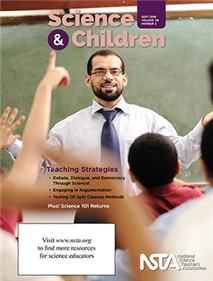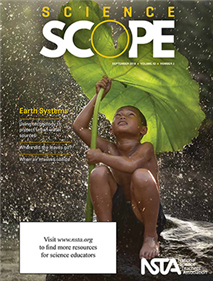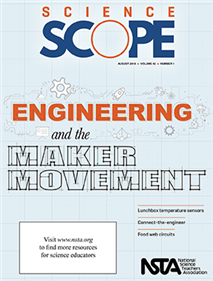All Middle School resources
Interactive E-book Kids
It is the year 2095, and Great Uncle Dar has just taken up the post of chief engineer on the solar system’s first inflatable space apartment building. Even better, his nephew, Peter, is spending the summer with him! Excited to catch up with Great U...
Blog Post
Anyone who teaches middle school students knows they have a lot of energy, and a lot of hot air. Why not put it to use? In this activity, students will be challenged to modify a simple plastic balloon racer to travel farther and faster. Students begi...
By Cindy Workosky
Blog Post
Scaffolding the Practice of Asking Questions and Defining Problems
With the adoption of the Next Generation Science Standards (NGSS), teachers are wondering how to teach their students to do the science and engineering practices (SEPs). Some SEPs, such as carrying out investigations and analyzing data, are a natural...
By Cindy Workosky
NSTA Press Book
Reading Nature: Engaging Biology Students With Evidence From the Living World
By making room for this book in your curriculum, you’ll have a fresh way to motivate your students to look at the living world and ask not only “Why?” but also “How do we know?” Unique in both its structure and approach, Reading Nature is a...
By Matthew Kloser, Sophia Grathwol
Journal Article
This column provides background science information for elementary teachers. This issue discusses phenomenon-based learning and activities to use in the science classroom....
Journal Article
Citizen Science: Cloudy With a Chance of “Cirrus” Science
This column highlights formal and informal science research projects that students can join and contribute to by gathering and sharing data. NASA Globe Observer (GO) Clouds is a citizen science project that combines cloud and sky observations from t...
NSTA Press Book
Instructional Sequence Matters, Grades 6–8: Structuring Lessons With the NGSS in Mind
Instructional Sequence Matters shows how to make simple shifts in the way you arrange and combine activities to improve student learning. It also makes it easy for you to put the NGSS into practice. After explaining why sequencing is so important, au...
By Patrick Brown
Blog Post
Modeling in Science Instruction
With the shift toward three-dimensional teaching and learning that the Next Generation Science Standards requires, the Crosscutting Concept of Modeling has become a major focus of my instruction. I use a process that involves revisiting the sam...
By Cindy Workosky
Journal Article
Citizen Science: Be a Zombee Hunter for Science
This column highlights formal and informal science research projects that students can join and contribute to by gathering and sharing data. Celebrate National Honey Month this September with honeybee citizen science. ZomBee Watch, a project in par...
NSTA Press Book
Packaging Design, Grade 6: STEM Road Map for Middle School
Packaging Design outlines a journey that will steer your students toward authentic problem solving while grounding them in integrated STEM disciplines. As are the other volumes in the STEM Road Map Curriculum Series, this book is designed to meet the...







